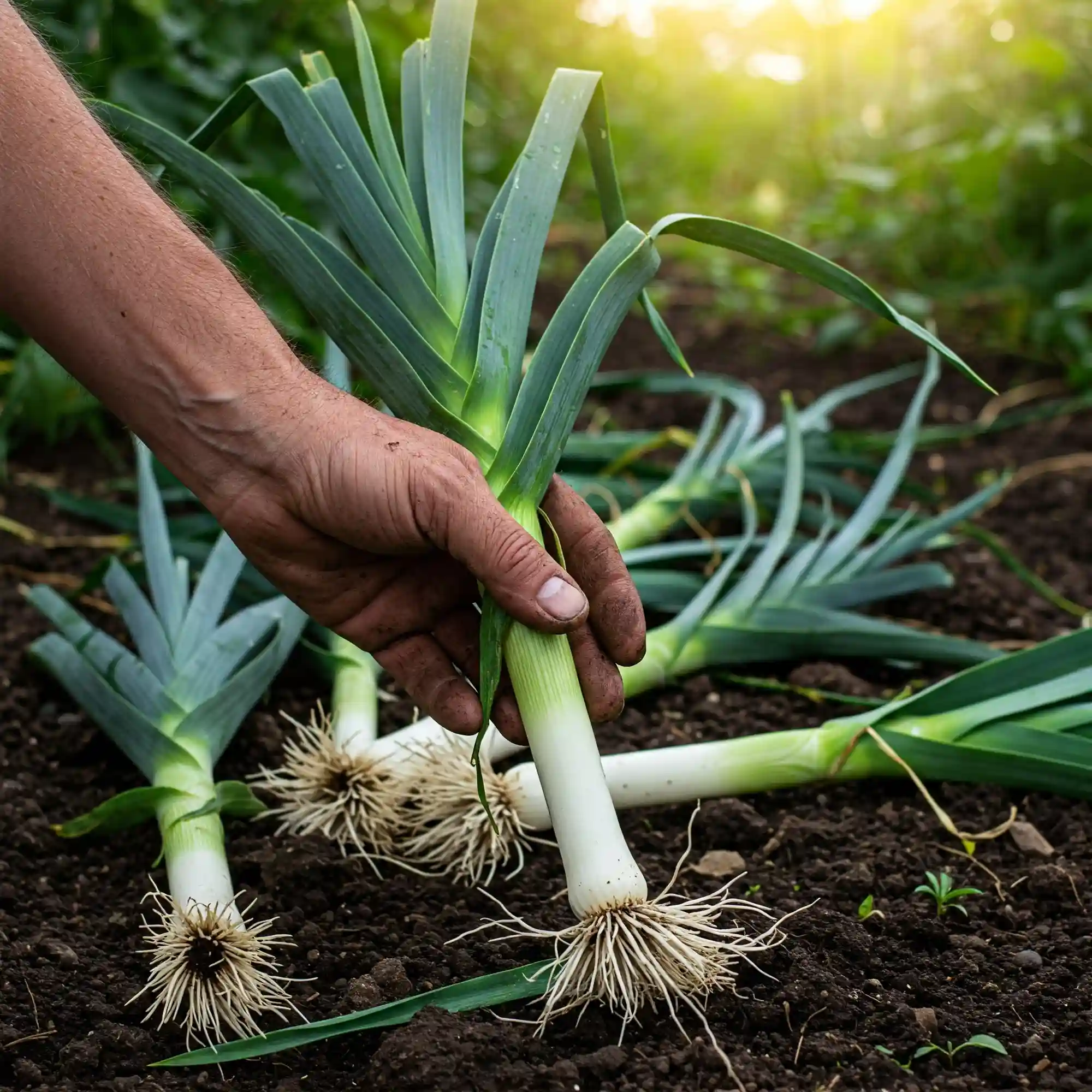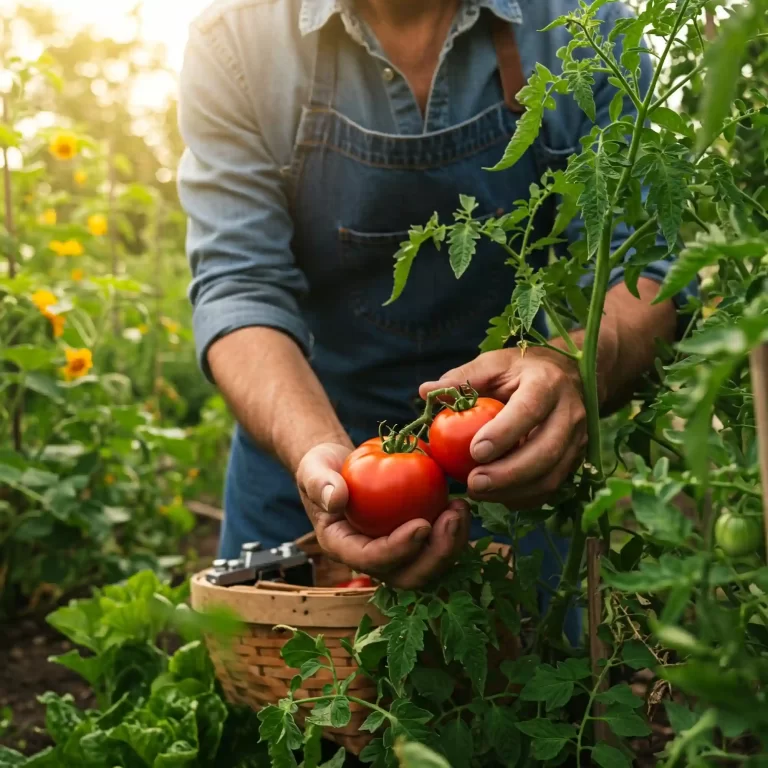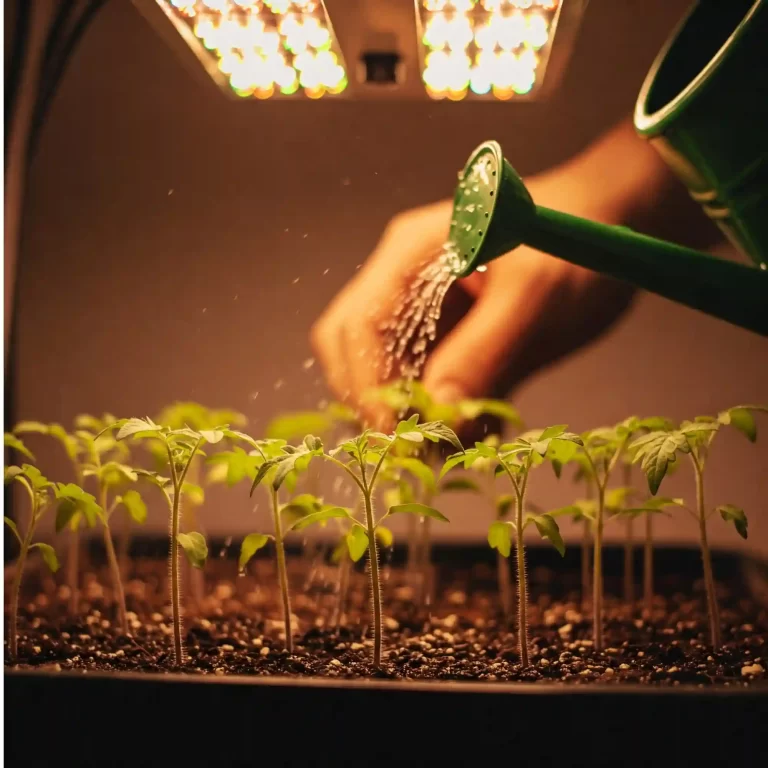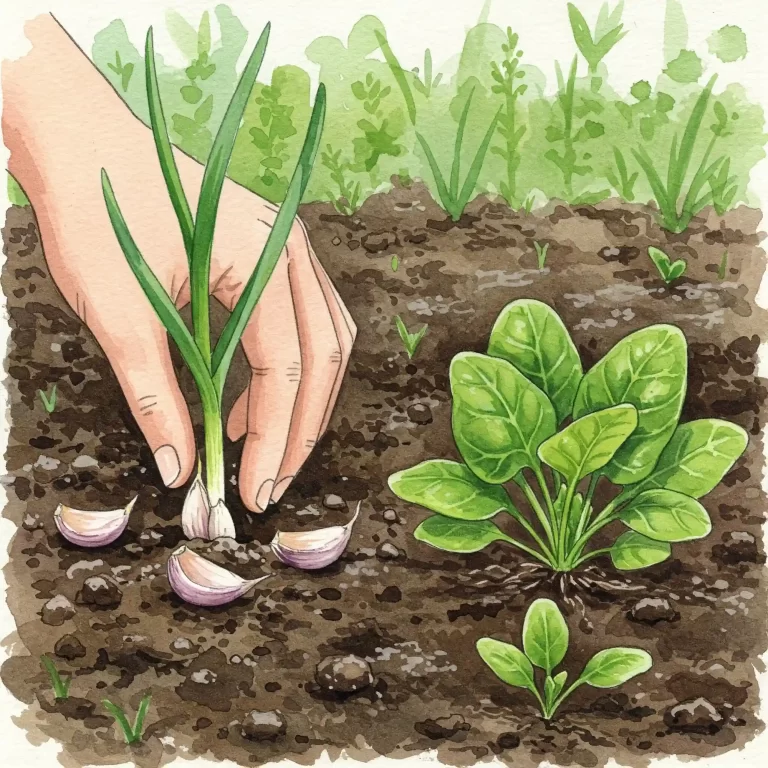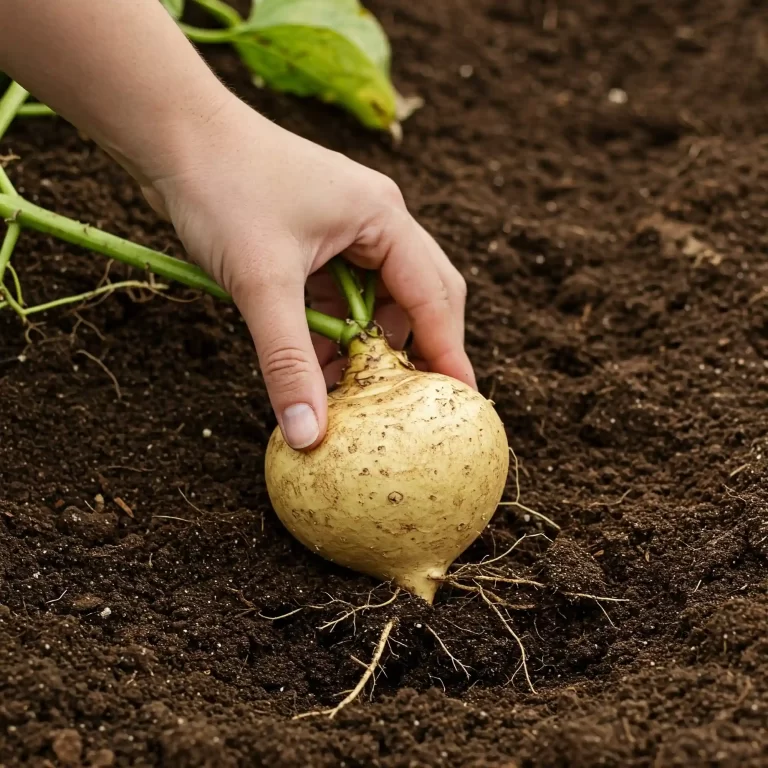Have you ever gazed longingly at those beautiful, blanched leeks in the grocery store, wishing you could pluck them fresh from your own garden? I know I have! It can seem intimidating, especially if you’re new to gardening, but trust me, growing leeks is surprisingly straightforward. You don’t need a sprawling farm or years of experience. In this comprehensive guide, I’ll share my personal experiences and insights, walking you through every step of the process, from choosing the right variety to savoring your homegrown leeks at the dinner table. Let’s get our hands dirty and discover the joy of growing these flavorful vegetables together!
Choosing the Right Leek Variety
One of the first things you’ll discover when exploring how to grow leek vegetable is the sheer variety of leeks available. It’s not just “leek” – there’s a whole world of them! Choosing the right variety is crucial for success, and it often depends on your climate, growing space, and personal preferences. Let me share some of my favorites and what I’ve learned about them.
- ‘Giant Musselburgh’: This is a classic, reliable variety, known for its long, thick stems and mild flavor. It’s a great all-around choice and often recommended for beginners. I’ve grown ‘Giant Musselburgh’ many times, and it’s always been a consistent producer.
- ‘Bandstand’: If you’re looking for a quicker harvest, ‘Bandstand’ is a good option. It matures earlier than some other varieties and offers a good balance of flavor and yield. I like this one for succession planting, as it allows me to stagger my harvest.
- ‘Autumn Giant’: As the name suggests, this variety is perfect for fall and winter harvests. It’s incredibly hardy and can withstand colder temperatures, making it ideal for extending your growing season. I appreciate that I can harvest these leeks even when the weather starts to turn.
- ‘Varna’: This is a newer variety I’ve experimented with that has shown good resistance to bolting. It’s a mid-season leek with good flavor.
- ‘Long White Improved’: This is a popular heirloom variety valued for its long, white stems, perfect for blanching.
Beyond these, you might also come across varieties like ‘King Richard,’ ‘American Flag,’ or ‘Electra.’ Each has its own unique characteristics. When making your choice, consider these factors:
- Climate: Some varieties are better suited to warmer or colder climates. Check the seed packet or plant tag for information on hardiness zones.
- Growing Space: If you have a small garden, you might want to choose a compact variety.
- Harvest Time: Think about when you want to harvest your leeks. Early, mid, and late-season varieties allow you to extend your harvest.
- Flavor: Leeks vary in flavor, from mild and sweet to more pungent.
I encourage you to experiment and find the varieties that work best for you. Don’t be afraid to try something new! You might just discover your new favorite leek. Remember, growing leeks is a journey of discovery.
Starting Leeks from Seed (or Seedlings)
Starting leeks from seed gives you more control over the growing process and is often more economical. However, it requires more time and effort. Here’s what I recommend:
- Timing: Start your seeds indoors about 6-8 weeks before the last expected frost in your area. This usually means late winter or early spring.
- Seed Starting Mix: Use a high-quality seed starting mix. Avoid garden soil, as it can be too heavy and may contain pathogens.
- Sowing: Sow seeds about ¼ inch deep and space them about an inch apart in your seed starting tray or pots.
- Watering: Keep the soil consistently moist but not soggy. A spray bottle is ideal for gentle watering.
- Light: Leek seedlings need plenty of light. A sunny window or grow light will work well.
- Temperature: Maintain a temperature between 60-70°F (15-21°C) for optimal germination.
- Hardening Off: Before transplanting seedlings outdoors, gradually acclimate them to the outdoor conditions over a week or two. This process is called “hardening off.”
Buying Transplants:
Buying leek transplants from a nursery is a convenient option, especially if you’re short on time or don’t have the space to start seeds indoors. When choosing transplants, look for healthy, vigorous seedlings with strong stems and no signs of disease or pests. I always check the roots to make sure they’re not root-bound.
Planting Leeks in Your Garden
Whether you started from seed or bought transplants, it’s time to get your leeks into the garden! Leeks thrive in full sun (at least 6 hours per day) and well-drained soil. Here’s how I plant my leeks:
- Soil Preparation: Amend your soil with compost or other organic matter to improve drainage and fertility. Leeks love rich soil.
- Planting Time: The best time to plant leeks outdoors is after the last frost. This usually means spring in most regions.
- Spacing: Space leeks about 6-8 inches apart in rows that are about 12-18 inches apart.
- Planting Depth: Plant leeks about 4-6 inches deep. You can create a small trench for them to sit in.
- Watering: Water thoroughly after planting.
- Mulching: Apply a layer of mulch around your leeks to help retain moisture and suppress weeds.
I’ve found that leeks also grow well in raised beds and even containers, as long as the containers are deep enough to accommodate their long stems. If you’re growing leeks in containers, choose pots that are at least 12 inches deep.
Caring for Your Leek Plants
Once your leeks are planted, it’s important to provide them with the care they need to thrive. Here are some essential tips:
- Watering: Leeks need consistent moisture. Water deeply and regularly, especially during dry spells. I check the soil moisture regularly and water when the top inch feels dry.
- Fertilizing: Leeks are heavy feeders. Apply a balanced fertilizer or side-dress with compost throughout the growing season.
- Weeding: Keep the area around your leeks free of weeds. Weeds compete with leeks for nutrients and water.
- Pest and Disease Control: Be vigilant for pests and diseases. Common leek pests include leek moth, onion fly, and thrips. Diseases like downy mildew and white rot can also be a problem. I prefer using organic pest control methods whenever possible.
Remember, regular observation and care will go a long way in ensuring healthy and productive leek plants. By following these tips, you’ll be well on your way to enjoying a bountiful harvest of delicious leeks.
Blanching Leeks for White Stems
Blanching leeks is a technique that produces sweeter, milder-flavored leeks with white stems. It involves excluding light from the lower part of the leek stem. Here are a few methods:
- Mounding Soil: As your leeks grow, gradually mound soil around the base of the stems, burying them further and further. This process blocks out light, preventing chlorophyll production and resulting in whiter stems.
- Cardboard Collars: You can also use cardboard collars or tubes to block out light. Place the collars around the base of the leeks as they grow, ensuring they extend above the soil level.
- Trenching: Plant leeks in a trench and then gradually fill the trench with soil as they grow. This method effectively blanches the lower part of the stems.
I usually start blanching my leeks when they are about a foot tall. It’s an ongoing process, as you’ll need to continue to add soil or adjust the collars as the leeks grow taller.
By blanching leeks, you not only improve their appearance but also enhance their flavor. The blanched portion of the stem becomes sweeter and more tender, making them a delicious addition to various dishes.
Harvesting and Storing Leeks
The moment you’ve been waiting for! Leeks are usually ready to harvest when they reach a desired size, typically at least an inch in diameter. Here’s how I harvest them:
- Loosen the Soil: Use a garden fork to loosen the soil around the base of the leek.
- Pull the Leek: Gently pull the leek from the ground, holding it close to the base to avoid breaking the tender stem.
- Trim the Greens: Trim the tops of the leaves to about 6 inches.
- Clean the Leeks: Remove any excess soil from the leeks by gently shaking them off or rinsing them under cool water.
Storing Leeks:
Proper storage is essential to maintain the freshness and flavor of your harvested leeks. Here are some tips:
- Short-Term Storage: Store leeks in the refrigerator in a plastic bag or wrapped in a damp paper towel. They can last for up to a week in the refrigerator.
- Long-Term Storage: For longer storage, you can freeze leeks. Blanch them first, then shock them in ice water and freeze in airtight containers or freezer bags.
- Preserving Leeks: Leeks can also be preserved by pickling or fermenting. This is a great way to enjoy them year-round.
Using Your Homegrown Leeks:
Leeks are a versatile ingredient that can be used in a variety of dishes. Here are a few ideas:
- Leeks in soups and stews: Leeks add a subtle onion flavor to soups and stews.
- Leeks in quiches and tarts: Leeks are a classic ingredient in quiches and tarts.
- Leeks in salads: Leeks can be added to salads for a crunchy texture and subtle flavor.
- Leeks in stir-fries: Leeks are a great addition to stir-fries.
- Leeks in pasta dishes: Leeks can be used to make a delicious pasta sauce.
I hope these tips help you enjoy your homegrown leeks! Remember, the key to success is providing consistent care and attention to your plants. With a little effort, you’ll be rewarded with a bountiful harvest of these flavorful vegetables.
Troubleshooting Common Leek Problems
Even the most attentive gardeners can encounter challenges when growing leeks. Here are some common problems you might encounter and how to address them:
- Yellowing Leaves: Yellowing leaves can be a sign of several issues, including nutrient deficiencies, overwatering, or root damage. Ensure your leeks are receiving adequate water and nutrients. Avoid overwatering, as it can lead to root rot.
- Stunted Growth: Stunted growth can be caused by various factors, such as poor soil quality, insufficient water, or nutrient deficiencies. Amend the soil with compost and ensure proper watering and fertilization.
- Pest Infestations: Common leek pests include leek moth, onion fly, and thrips.
- Leek Moth: These moths lay eggs on leek leaves, and the larvae feed on the leaves, causing damage. You can protect your leeks by covering them with netting or row covers.
- Onion Fly: These flies lay eggs on the soil around the base of the leeks, and the larvae feed on the roots. You can prevent onion fly damage by using row covers or planting leeks near strong-smelling plants like marigolds, which can deter the flies.
- Thrips: These tiny insects suck the sap from leek leaves, causing them to become discolored and stunted. You can control thrips by spraying them with insecticidal soap or introducing beneficial insects like ladybugs to your garden.
- Diseases: Diseases like downy mildew and white rot can also affect leeks. Downy mildew causes white, fuzzy patches on the leaves, while white rot causes the base of the leek to rot. To prevent these diseases, practice good garden hygiene, avoid overhead watering, and ensure proper drainage.
If you encounter any problems with your leeks, don’t panic. Identify the issue and take appropriate action. With a little care and attention, you can overcome most challenges and enjoy a successful leek harvest.
Remember, prevention is key. By providing your leeks with the right growing conditions, proper care, and protection from pests and diseases, you can minimize the risk of encountering problems.
Leek Companion Planting Leek Companion Planting
Companion planting is a gardening technique that involves growing different plants together to benefit from their interactions. Certain plants can deter pests, attract beneficial insects, or improve the soil quality for their neighbors. Leeks can also benefit from companion planting. Here are some plants that make good companions for leeks:
- Carrots: Leeks and carrots are a classic companion planting combination. The strong roots of leeks help to aerate the soil, which benefits the shallow-rooted carrots. In turn, the carrot roots help to deter onion flies, which can be a problem for leeks.
- Onions: Leeks and onions are both members of the Allium family and can help to deter each other’s pests. Planting them together can create a natural pest barrier.
- Herbs: Certain herbs, such as rosemary, sage, and thyme, can help to repel pests that might attack leeks. Planting these herbs around the perimeter of your leek bed can act as a natural pest deterrent.
- Strawberries: Planting strawberries near leeks can help to improve the flavor of both plants.
- Marigolds: Marigolds are known to repel many common garden pests, including nematodes. Planting marigolds near your leeks can help to protect them from these harmful pests.
It’s important to note that while companion planting can be beneficial, it’s not always foolproof. The effectiveness of companion planting can vary depending on the specific varieties of plants, the growing conditions, and the presence of other factors in your garden.
Experiment with different companion planting combinations to see what works best for you. You might be surprised at the positive impact that companion planting can have on your leek harvest.
FAQ
One of the great things about gardening is the constant learning and problem-solving. Here are some frequently asked questions about growing leeks, along with my insights:
- Q: How long do leeks take to grow from seed to harvest?
A: Generally, leeks take between 100-150 days from seed to harvest, depending on the variety and growing conditions. Some early-maturing varieties may be ready sooner, while later-season varieties may take longer.
- Q: Can I grow leeks in containers?
A: Absolutely! Leeks can be successfully grown in containers, making them a great option for those with limited garden space. Choose deep containers, at least 12 inches deep, to accommodate the long roots of leeks. Ensure the containers have adequate drainage.
- Q: What is the best fertilizer for leeks?
A: Leeks are heavy feeders and benefit from regular fertilization. You can use a balanced fertilizer, such as a 10-10-10 formulation, according to package directions. I also recommend side-dressing with compost around the base of the plants every few weeks throughout the growing season. Compost provides a slow-release source of nutrients and improves soil structure.
- Q: Why are my leeks bolting?
A: Bolting occurs when leeks prematurely go to seed, resulting in a flower stalk instead of a usable stem. Bolting is often triggered by stress, such as extreme heat or drought. To prevent bolting, ensure consistent watering and provide some shade during hot weather.
- Q: How do I prevent leek moth damage?
A: Leek moth caterpillars can cause significant damage to leek leaves. To prevent leek moth infestations, you can: * Cover your leeks with row covers or netting to protect them from adult moths. * Practice crop rotation. Avoid planting leeks in the same location year after year. * Encourage beneficial insects like parasitic wasps, which prey on leek moth caterpillars.
- Q: When is the best time to plant leeks in [Specific Region]?
A: Planting times can vary depending on your specific region and climate. It’s best to consult local gardening resources or your county extension office for the most accurate planting recommendations for your area.
- Q: How do I know when my leeks are ready to harvest?
A: Leeks are typically ready to harvest when they reach a desired size, usually at least an inch in diameter. The stems should feel firm. You can gently squeeze the base of the leek; if it feels soft, it may not be ready yet.
By addressing these common questions and concerns, you can increase your confidence and success in growing leeks. Remember, every garden is unique, so don’t hesitate to experiment and adjust your techniques based on your specific observations and experiences.
Conclusion
Growing leeks can be a rewarding experience. By following the tips and techniques outlined in this guide, you can increase your chances of success and enjoy a bountiful harvest of these flavorful vegetables. Remember to choose the right leek variety, provide proper care, and be vigilant for pests and diseases. With a little patience and attention, you’ll be enjoying delicious homegrown leeks in no time.
I hope this guide has been helpful. Happy gardening!
